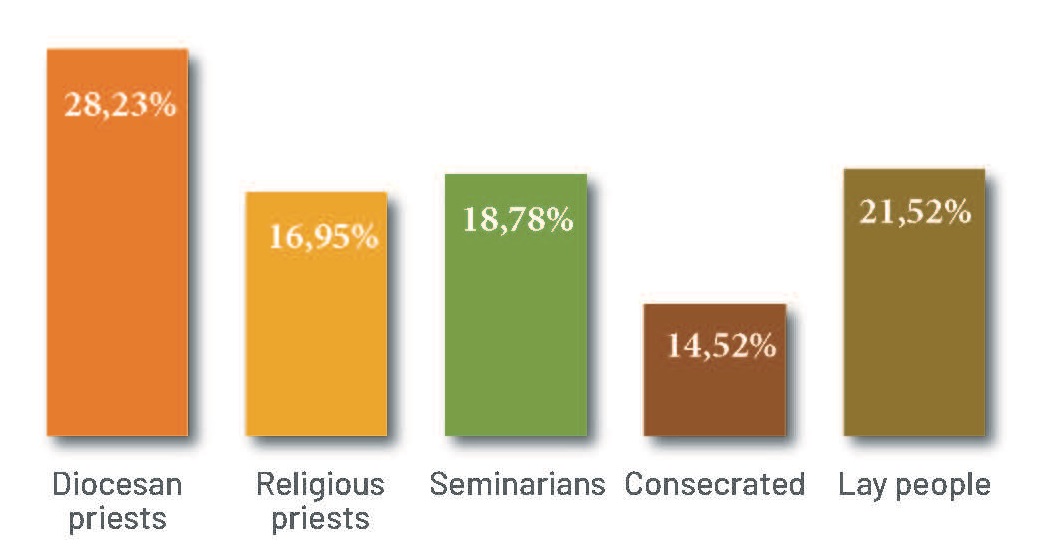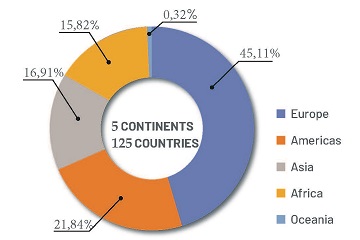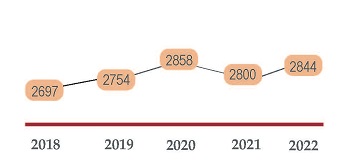Studying at the Gregorian
- Home
- University
- About us
- Studying at the Gregorian

The origin of the Pontifical Gregorian University dates back to 1551 when Saint Ignatius of Loyola, together with a small group of Jesuits, established in Rome a “free school of grammar, humanities and Christian doctrine”. This institution was called the Roman College and, in 1873, by the will of Pope Pius IX, took the name of the Pontifical Gregorian University.
In 1928, Pope Pius XI wanted to associate the Pontifical Biblical Institute and the Pontifical Oriental Institute to the Gregorian University. From that time on the three institutions have cooperated together in teaching and in research, facilitating the exchange of professors and students as well as access to their libraries.
Committed to the pedagogical tradition of the Society of Jesus, the Gregorian University focuses on excellence in studies, complete formation as well as a human and spiritual growth for each student. We dedicate ourselves so that every student can be a protagonist of a “Church which goes forth” and, at the same time, can answer in depth and with spirit of service to the many challenges of today’s world. Among those challenges are integral human development; the scientific and technological evolution; the interreligious dimension of contemporary society; the problems of family; migratory flows; ecology and the care of our common home; safeguarding.
As a University entrusted to the Society of Jesus, we accept the exhortation of our Vice Grand Chancellor, Fr. Arturo Sosa S.J., to make each university a “source of reconciled life”.
Studying at the Gregorian University offers a unique experience on a human, ecclesial and academic level, and leaves a mark of universality for life. Its international nature, with professors and students from around 120 countries, makes the University atmosphere unique.
In a multicultural environment, where the centre and the peripheries meet, the Gregorian offers a diversified formation in its six faculties, three institutes and five specialised centres. Our students can also enhance their curricula with courses from other institutions of ecclesiastical studies in Rome.
The diversity of the academic areas allows the University to put into action what Pope Francis asks of the ecclesiastical universities in the Apostolic Constitution Veritatis Gaudium: “inter-disciplinary and cross-disciplinary approaches carried out with wisdom and creativity in the light of Revelation”.
Finally, living and studying in Rome is not, for us, a simple geographic issue. In the city of Peter and Paul, we are at the heart of the Christian world, in close contact with our history and our identity. For this reason, the University offers its students – seminarians, priests, religious men and women, lay people – an environment under the sign of ecclesiality, which inspires and shapes those who are training for a highly qualified service in their local Churches.
The Gregorian University confers academic degrees with canonical value by authority of the Holy See, in compliance with the principles of the Bologna Process, undersigned by the Holy See in 2003. The University also has the right to confer its own diplomas through its academic units, with the approval of the Congregation for Catholic Education.
Several programmes of study can start either in the first or in the second semester (October and February) of the academic year.
The possibility of having a civil recognition of the canonical bachelor, licence and doctorate degrees is guaranteed by bilateral agreements and multilateral conventions, among which: Lisbon Convention (1997), Tokyo Convention (2011), Addis Ababa Convention (2014) and Buenos Aires Convention (2019), all of them signed by the Holy See.
As an ecclesiastical university, the Gregorian University is subject to AVEPRO, the Holy See Agency for evaluation and the enhancing of quality.



The Library contributes to the mission of the University and is specialised in the different sectors in which it conducts teaching and research activities.
The collection of books amounts to about 650,000 volumes, 50,000 of which are available on open shelves.
There are also about 150,000 tomes of the Periodicals Collection, all of them on open shelves, and a great variety of electronic resources that can be accessed also remotely. The five reading rooms can contain up to 332 users.
Periodicals: Gregorianum; Periodica de re canonica; Archivum Historiae Pontificiae; Ignaziana.
Series: Analecta Gregoriana; Miscellanea Historiae Pontificiae; Rhetorica Biblica et Semitica; Documenta Missionalia; Tesi Gregoriana; Interreligious and Intercultural Investigations; Theologia; Diritto Canonico; Philosophia; Spiritualità; Storia e Beni Culturali della Chiesa; Chiesa e Società.